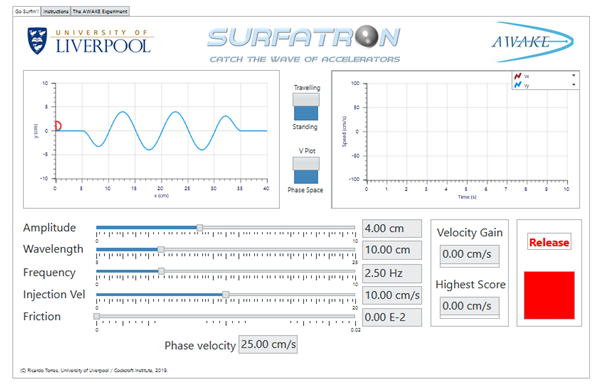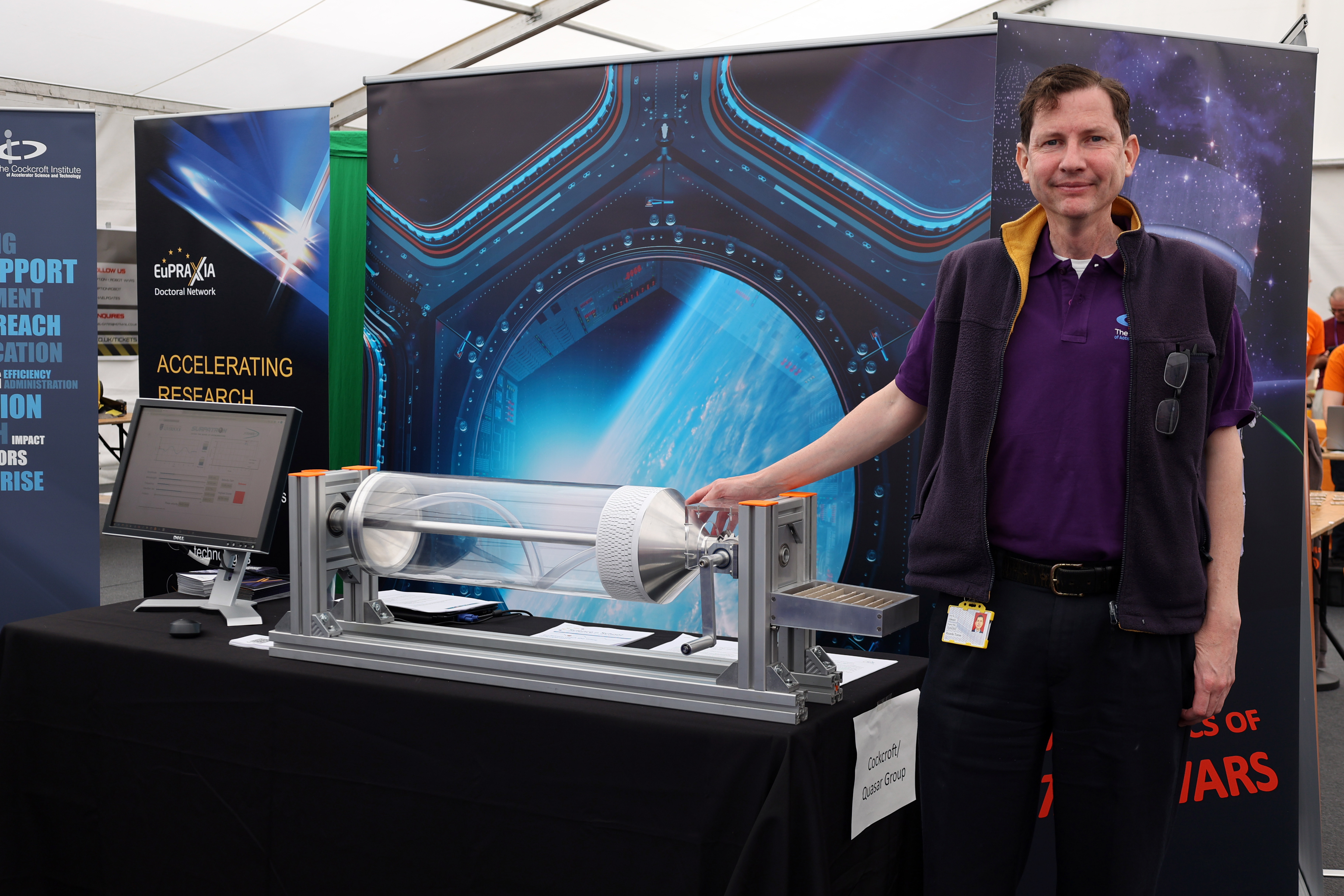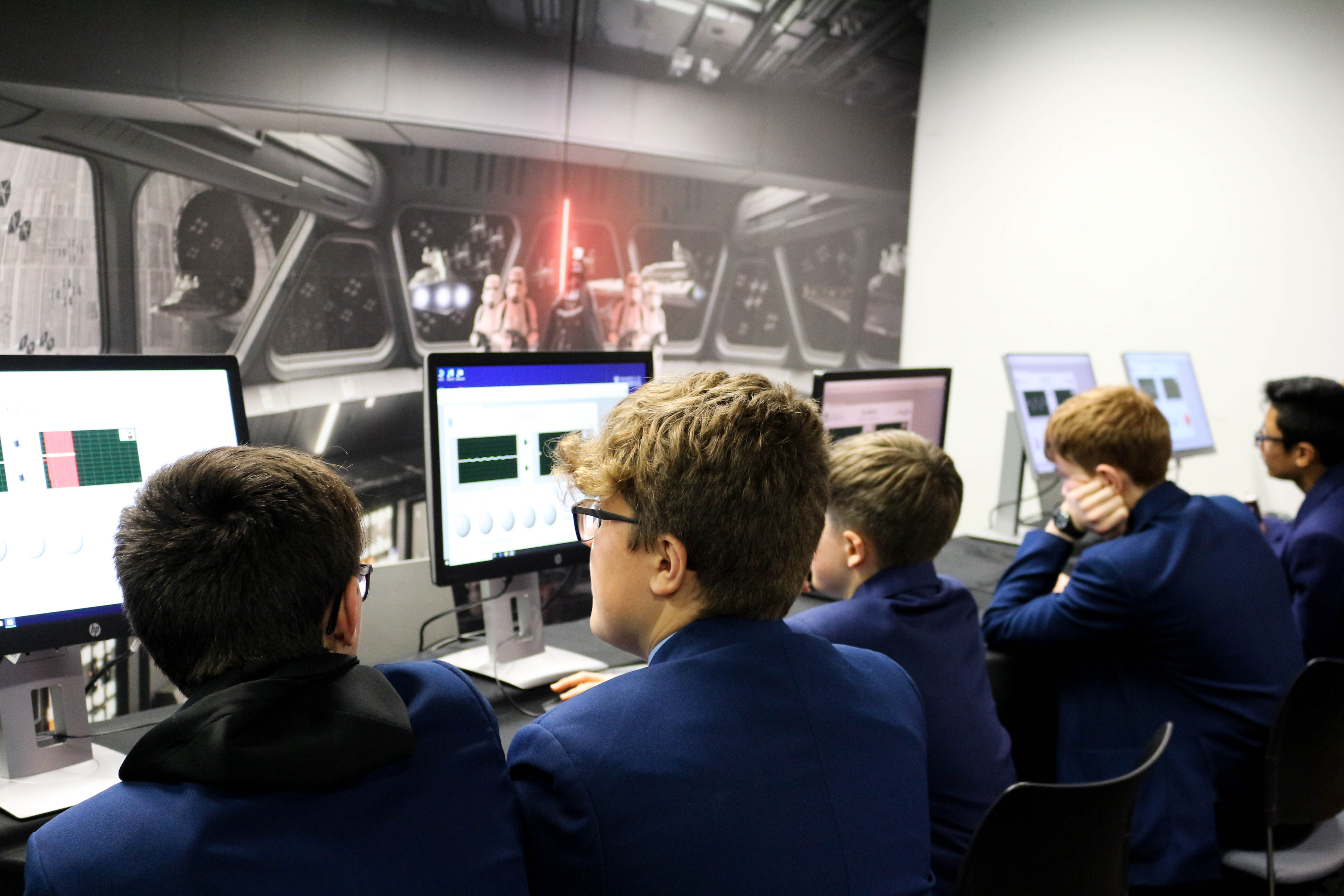Bringing cutting-edge accelerator research into the classroom is a challenge that few scientists are willing to undertake. Physics teachers are often willing to introduce variety to the otherwise unexciting lessons by adding snippets from contemporary science, but they struggle to find activities that are accessible, align with the school curriculum and, most importantly, capture the attention of their agitated students.
An online activity designed at the University of Liverpool has proven successful in engaging schoolchildren with the physics of the novel plasma wakefield accelerator being investigated in AWAKE. The Advanced Wakefield (AWAKE) Experiment is an international project at CERN, which aims to demonstrate that a proton beam can be used to drive a strong wakefield in a plasma and accelerate a witness bunch of electrons. The accelerating gradients can be up to 100 GV/m, or about 1,000 times higher than those achieved in conventional RF accelerators [1].

The activity, called Surfatron, is an online computer game that simulates the motion of a ball in an undulating track. The ball stands for a charged particle –an electron– and the undulating track represents a plasma wave. The aim of the game is to get the ball to gain as much speed as possible by finding the optimum parameters of the wave (amplitude, wavelength, and frequency) and launching the ball at the right time with the appropriate initial speed.
The game lets the player experience some of the challenges faced by the scientists working in AWAKE and other wakefield acceleration projects, namely controlling the plasma structure, synchronising the witness electron beam with the plasma oscillations, and extracting the maximum energy from the system.
The Surfatron has been used successfully in a number of science festivals and outreach events organised by the University of Liverpool, where its potential to engage secondary school children as well as adults has been demonstrated.
A mechanical version of the Surfatron was also designed and built at the University of Liverpool to be used alongside the simulation. The mechanical Surfatron consists of a pipe twisted around a cylinder that is free to rotate around its longitudinal axis. As the cylinder is turned, the pipe behaves like a one-dimensional travelling wave. A ball inserted into the pipe at the right time can be accelerated forward following the same principles as the virtual Surfatron.

The Surfatron can be used in any educational environment, from a classroom to a science fair, as a primer to wave mechanics or as a virtual laboratory of particle accelerators. A recent article published in the journal Science in School suggests some physics lessons that can be taught by secondary school teachers employing the Surfatron [2]. The lessons introduce the basic notions of waves and motion and connect them with the science of plasma wakefield acceleration. An information sheet for teachers explains more in detail the science of plasma accelerators in connection to the Surfatron, and links it to the AWAKE experiment at CERN. Finally, the article includes instructions on how to build and operate a mechanical Surfatron, which can be done for under 50 euro using simple materials.
The online Surfatron can be accessed here and a video describing the game and the science behind it can be found here.
References:
[1] E. Adli, A. Ahuja, O. Apsimon et al., Acceleration of electrons in the plasma wakefield of a proton bunch. Nature 561, 363–367 (2018). https://doi.org/10.1038/s41586-018-0485-4
[2] R. Torres, Surfatron: Catch the wave of accelerators. Science in School, Issue 62 (April 2023).
https://www.scienceinschool.org/article/2023/surfatron-catch-the-wave-of-accelerators/

